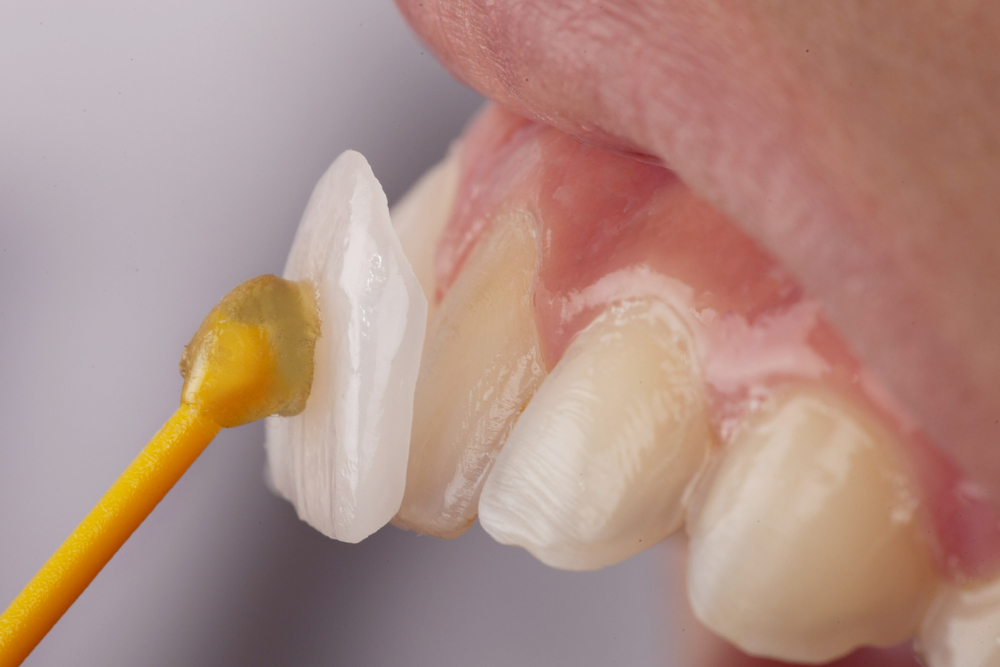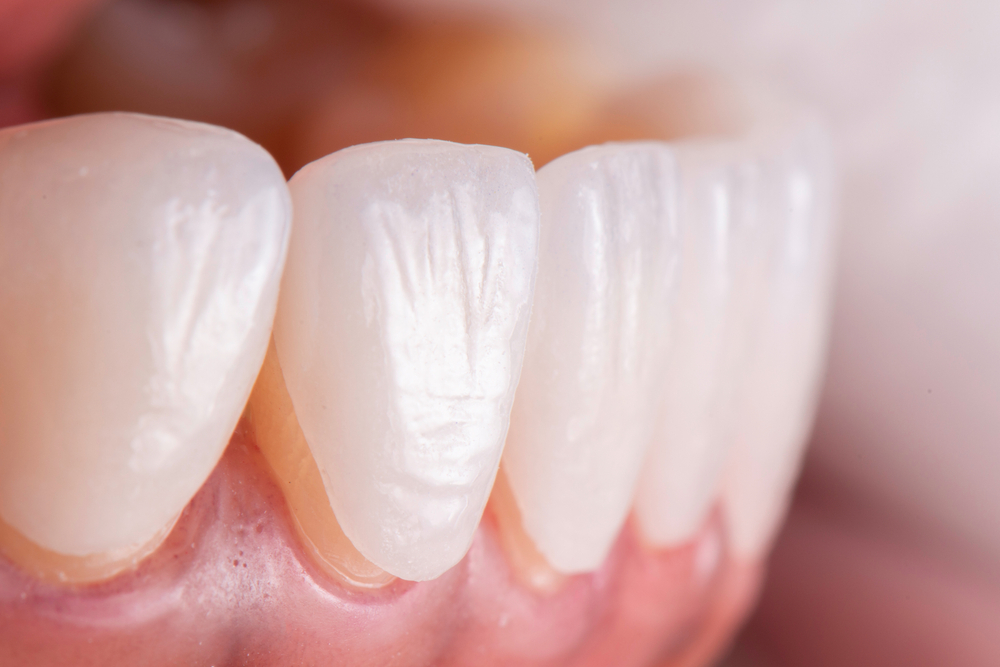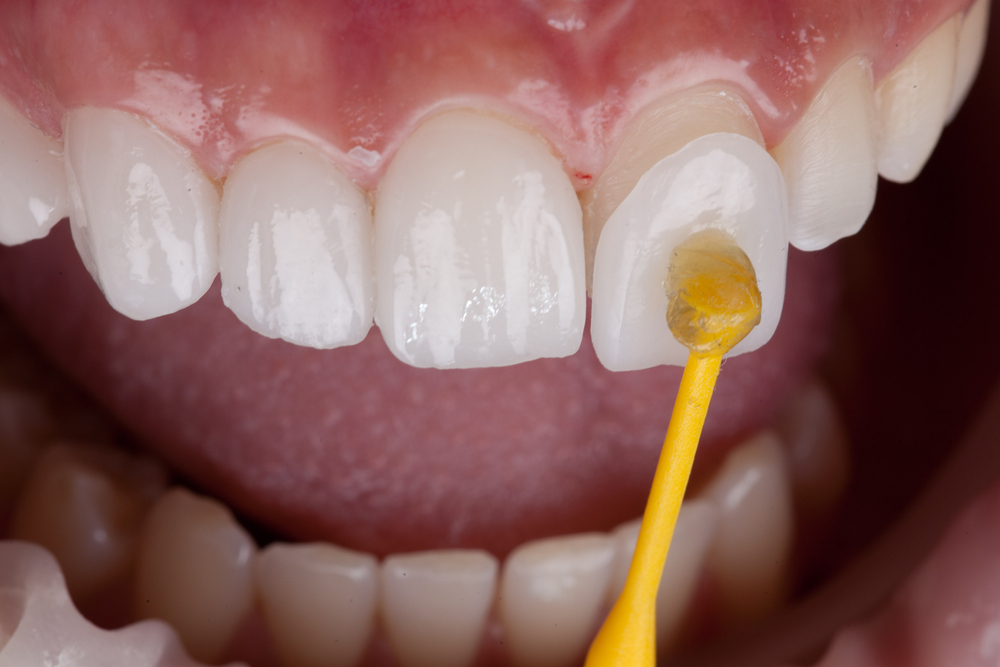In the world of smiles and dental health, dental veneers shine bright as a popular choice for those looking to enhance their smiles. These thin, tailor-made shells are like a magical cover for your teeth, transforming not just how they look, but often how you feel about your smile. In cosmetic dentistry, they’ve become a go-to solution for various dental imperfections, from chipped teeth to gaps that might make you think twice before flashing a grin. This article delves deep into the realm of dental veneers, explaining their role and importance in boosting dental aesthetics. Whether you’re just curious or seriously considering veneers for yourself, you’ll find essential insights here.
What Are Dental Veneers?

Imagine a tailor crafting a custom suit that fits you perfectly. Dental veneers work similarly for your teeth. They are ultra-thin shells, carefully shaped and designed to cover the front part of your teeth. Their job? To give your teeth a more classically shaped look and a brighter appearance.
Now, these veneers come mainly in two flavors: porcelain and composite. Porcelain veneers are like the deluxe version. They’re strong, long-lasting, and mimic the way natural teeth reflect light, giving a very natural appearance. Composite veneers, on the other hand, are like the quick, cost-effective option. They’re easier to fix up and generally don’t require as much tooth reshaping as their porcelain counterparts. But they might not have the same lifespan as porcelain.
Both types have their own unique properties, making them suitable for different needs and preferences in cosmetic dentistry. Whether you’re aiming for a dramatic transformation or a subtle enhancement, veneers offer a versatile solution. In the following sections, we’ll explore the benefits and considerations of each type, helping you make an informed decision about which is right for you.
The Benefits of Veneers
When it comes to sprucing up your smile, veneers are like the secret weapon of cosmetic dentistry. They’re not just about making your teeth look picture-perfect; they bring a bunch of functional benefits to the table too.
Let’s talk about porcelain veneers first. These tough little shells are like the superheroes of veneers. They’re incredibly durable, meaning they can stand up to a lot of what your day throws at them, just like your natural teeth. And the best part? They look so natural that it’s like having a brand-new, flawless version of your own teeth. Porcelain veneers are fantastic for giving you that Hollywood smile while also being robust enough to handle everyday life.
But what if you’re watching your budget? That’s where composite veneers step in. They’re the more wallet-friendly option and still do a great job at making your smile brighter and more even. Plus, getting composite veneers is usually a bit quicker, as they require less prep work on your natural teeth. They might not last as long as porcelain veneers, but they’re a solid choice if you’re looking for a significant improvement without a hefty price tag.
Understanding the Risks and Downsides
As amazing as veneers can be, it’s crucial to know that they’re not a one-size-fits-all solution, and like most things in life, they come with their own set of considerations.
First up is tooth sensitivity. When veneers are placed, a small amount of your tooth’s enamel has to be removed. This process can lead to increased sensitivity to hot and cold. For most people, this sensitivity fades away, but it’s something to keep in mind.
Another point to consider is that getting veneers is a decision you and your teeth are pretty much making for life. It’s an irreversible process because of the enamel removal. Once you’ve got veneers, you’re committed to maintaining them, which might include replacements down the line.
Also, while veneers are strong, they’re not indestructible. Just like natural teeth, they can chip or break if you’re not careful. So, if you love to munch on ice or bite your nails, you might want to think twice before getting veneers.
In the next sections, we’ll take a closer look at the veneer procedure itself and how to choose between porcelain and composite veneers, ensuring you have all the information you need to make the best decision for your smile.
The Procedure: What to Expect

Embarking on the journey to get dental veneers is like going on a well-planned road trip – it involves several steps, but the destination is worth it. Here’s a breakdown of what you can expect:
- Consultation and Planning: This is where it all starts. You’ll have a chat with your dentist about your smile goals and what you hope to achieve with veneers. Your dentist will examine your teeth to ensure veneers are a suitable option and discuss the process, including which type of veneer might be best for you.
- Tooth Preparation: If you’re getting porcelain veneers, your dentist will prepare your teeth by removing a thin layer of enamel. This step is essential to make sure the veneers fit perfectly and look natural. For composite veneers, less enamel is removed, making it a less invasive process.
- Impressions: Once your teeth are prepped, your dentist takes an impression or mold of your teeth. This mold is then sent to a dental lab where your custom veneers are crafted. In the meantime, you might get temporary veneers to protect your teeth.
- Fitting the Veneers: When your veneers are ready, you’ll come back for the fitting. Your dentist will place the veneers on your teeth to check the fit and appearance, making any necessary adjustments.
- Bonding: Once everything looks good, your dentist will permanently bond the veneers to your teeth. This involves a special adhesive and a light that hardens the adhesive quickly.
- Final Touches and Follow-Up: Your dentist will make any final adjustments and polish the veneers. They’ll also schedule a follow-up visit to check on your veneers and how you’re adjusting to them.
Porcelain vs. Composite Veneers
When it comes to choosing between porcelain and composite veneers, think of it as choosing between two great options, each with its own set of strengths.
Porcelain Veneers:
- Aesthetics: Porcelain has a translucent quality that mimics the look of natural teeth enamel, giving a more natural and radiant appearance.
- Durability: They are highly durable, often lasting 10-15 years or more with proper care.
- Cost: Porcelain veneers are generally more expensive due to their material quality and the labor involved in their creation.
Composite Veneers:
- Aesthetics: While composite veneers look good, they might lack the same translucency as porcelain, giving a slightly less natural appearance.
- Durability: They are less durable than porcelain, usually lasting 5-7 years before needing replacement.
- Cost: These veneers are more affordable and can be a great option for those on a budget.
In summary, if you’re looking for a long-term investment with a highly natural look, porcelain veneers might be your best bet. If you’re seeking a more affordable and quicker solution, composite veneers could be the way to go. Your dentist will help guide you in making the best choice for your specific needs and lifestyle.
Costs and Investment
When considering dental veneers, it’s important to think of them not just as a cost, but as an investment in your smile and self-confidence. The price tag for veneers can vary widely, influenced by several factors:
- Type of Material: Porcelain veneers tend to be more expensive than composite veneers. This is due to the material quality and the intricate process involved in crafting porcelain veneers.
- Number of Veneers: The more veneers you need, the higher the overall cost. Some people opt for a full set, while others might just need a few to improve their smile.
- Dentist’s Experience and Location: The cost can also depend on the expertise of the dentist and the geographical location of the dental practice. Specialists in cosmetic dentistry or practices located in high-cost areas may charge more.
- Complexity of the Procedure: Every smile is unique, and some might require more preparatory work or complex procedures, impacting the overall cost.
While veneers can be a significant financial commitment, many find the transformation in their smile and the boost in confidence to be well worth the investment. Plus, with proper care, this one-time investment can last many years, making it a cost-effective solution in the long run.
Maintaining Your Veneers
To ensure your investment in dental veneers pays off, proper maintenance is key. Here are some tips to keep your veneers in top shape:
- Oral Hygiene: Just like your natural teeth, veneers require regular brushing and flossing. Use a non-abrasive toothpaste and a soft-bristled toothbrush to avoid scratching the veneers.
- Regular Dental Check-Ups: Regular visits to your dentist are crucial. They can check the condition of your veneers and perform professional cleanings to keep them looking their best.
- Avoiding Hard Foods: While veneers are durable, they can chip or crack. It’s wise to avoid biting down on hard foods like ice or hard candy with your veneered teeth.
- No Teeth Grinding: If you grind your teeth, consider getting a night guard. Grinding can damage both your natural teeth and your veneers.
- Limit Staining Foods and Beverages: Beverages like coffee, tea, and red wine, or foods with strong colorants, can stain veneers over time. Moderation is key, and remember to rinse your mouth with water after consuming these items.
By following these care guidelines, you can help ensure your veneers stay in great condition for as long as possible, maintaining their appearance and functionality for years to come.
Patient Case Studies
To give you a clearer picture of what it’s like to get dental veneers, let’s look at some anonymized case studies from patients who have gone through the process. These stories highlight their journeys and the outcomes they achieved.
Case Study 1: The Career Booster

- Background: A 30-year-old marketing professional who felt self-conscious about her chipped and discolored front teeth.
- Decision: Chose porcelain veneers for a more uniform and whiter smile.
- Outcome: Reported a significant boost in confidence, which she felt helped her in presentations and client meetings. She noted that the veneers felt natural and required no special care beyond her regular dental hygiene routine.
Case Study 2: The Smile Makeover

- Background: A 31-year-old teacher with worn-down teeth due to grinding, as well as discoloration from decay and staining.
- Decision: Opted for a mix of porcelain veneers on upper teeth and composite bonding on lowers to balance cost and aesthetics.
- Outcome: Was delighted with the transformation, saying it made him feel younger and more outgoing. He also appreciated the minimal downtime and the straightforward procedure.
These stories show that whether it’s for professional or personal reasons, the impact of veneers on one’s life can be profound and extend beyond just aesthetics.
Choosing the Right Dentist
Selecting the ideal cosmetic dentist is critical for a successful dental veneer experience. Here are some criteria and questions to consider:
- Experience and Specialization: Look for a dentist who specializes in cosmetic dentistry and has extensive experience with veneers. Ask how many veneer procedures they have performed.
- Before-and-After Photos: Request to see before-and-after photos of previous patients who have received veneers. This can give you a good idea of the dentist’s skill and the results you can expect.
- Reviews and Testimonials: Check online reviews or ask for testimonials from past patients to gauge their satisfaction with the dentist’s work.
- Consultation Approach: During your consultation, does the dentist take the time to understand your needs and concerns? Are they thorough in explaining the procedure, options, and what to expect?
- Technology and Materials: Ask about the technology and materials used in the practice. A good cosmetic dentist will use high-quality materials and the latest techniques to ensure the best results.
- Aftercare and Support: Ensure the dentist offers good aftercare support and guidance on maintaining your veneers.
Choosing a dentist who meets these criteria will help ensure you are comfortable, informed, and ultimately happy with your veneer treatment. Remember, the right dentist not only improves your smile but also supports your overall dental health and well-being.
Common Myths and Misconceptions
Before we conclude our journey through the world of dental veneers, let’s address some common myths and misconceptions that often swirl around this topic:
Myth 1: Veneers Look Fake
Reality: While this may have been true in the past, modern veneers are designed to look incredibly natural. Dentists work closely with patients to achieve a look that fits their face and personality perfectly.
Myth 2: Veneers Are Painful
Reality: The veneer procedure is generally painless, with minimal discomfort. Local anesthesia is often used during tooth preparation to ensure you feel little to no pain.
Myth 3: Veneers Are Fragile
Reality: While veneers are not indestructible, they are quite durable. With proper care and maintenance, they can last for many years without issues.
Myth 4: Veneers Require Special Care
Reality: Veneers don’t need a complicated care routine. Regular brushing, flossing, and dental check-ups are usually all that’s required to keep them in top shape.
Myth 5: Anyone Can Get Veneers
Reality: Veneers are not suitable for everyone. Your dentist will assess your oral health and discuss your goals to determine if you’re a good candidate for veneers.
Final Thoughts
As we wrap up this journey through the world of dental veneers, it’s clear that these custom-made shells have the power to transform smiles and lives. Whether you choose porcelain or composite veneers, the decision to enhance your smile is a significant one.
Remember that dental veneers offer both cosmetic and functional benefits, and the choice between them should be based on your unique needs and preferences. Consultation with an experienced cosmetic dentist is crucial to making the right decision.
In your pursuit of the perfect smile, be aware of common myths and misconceptions that might lead you astray. Armed with accurate information, you can confidently explore veneers as a solution to your dental concerns.
For those seeking dental care solutions in Glendale, AZ, look no further than Smile Science Dental Spa, led by Dr. Richard Dawson and Dr. John Turke. Their commitment to comprehensive dental treatments, including dental veneers, ensures you receive exceptional care tailored to your individual needs.
Your smile is an integral part of who you are. With the right guidance and professional support, you can achieve the smile you’ve always dreamed of and enjoy the lasting benefits of dental veneers.





